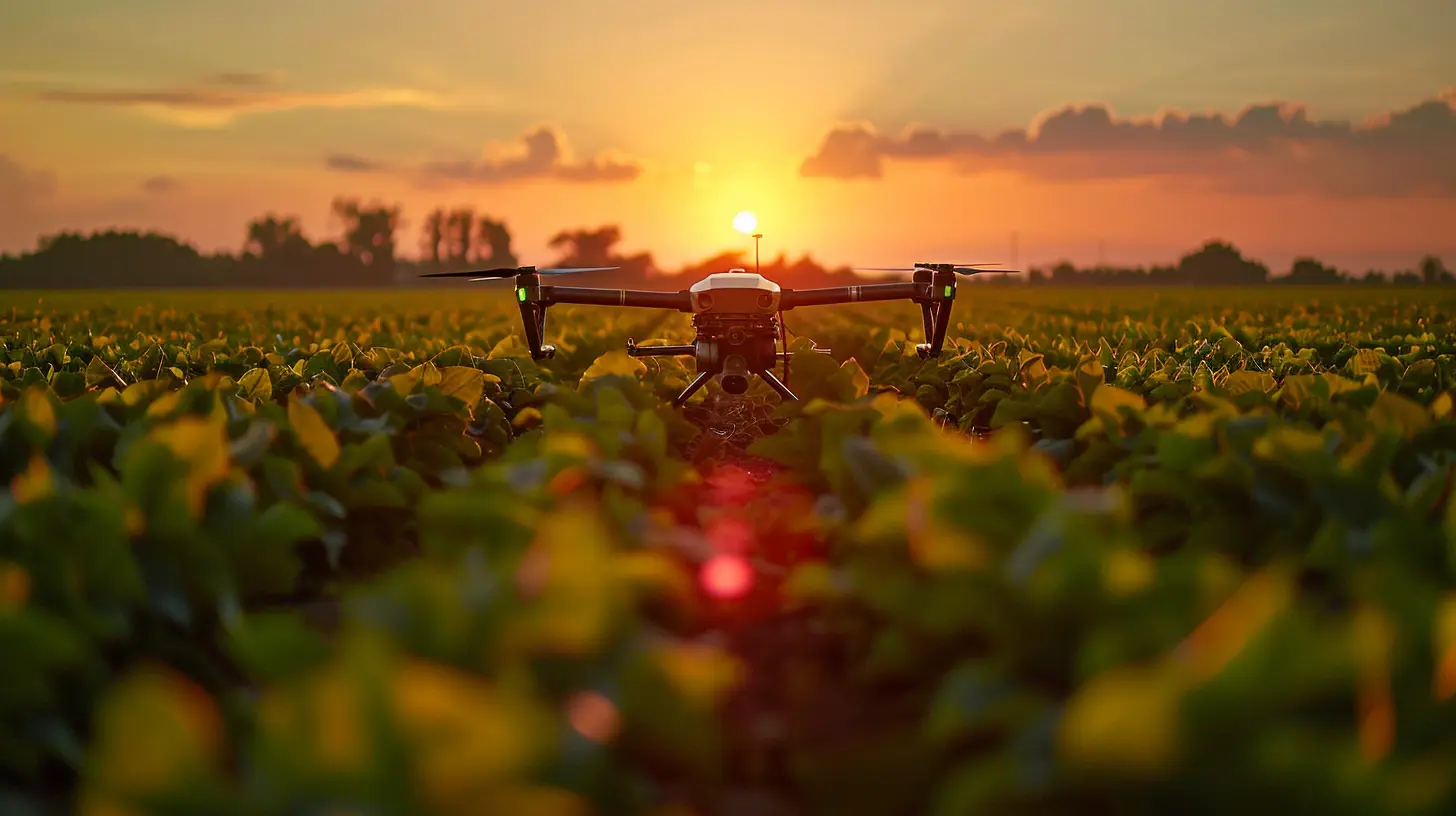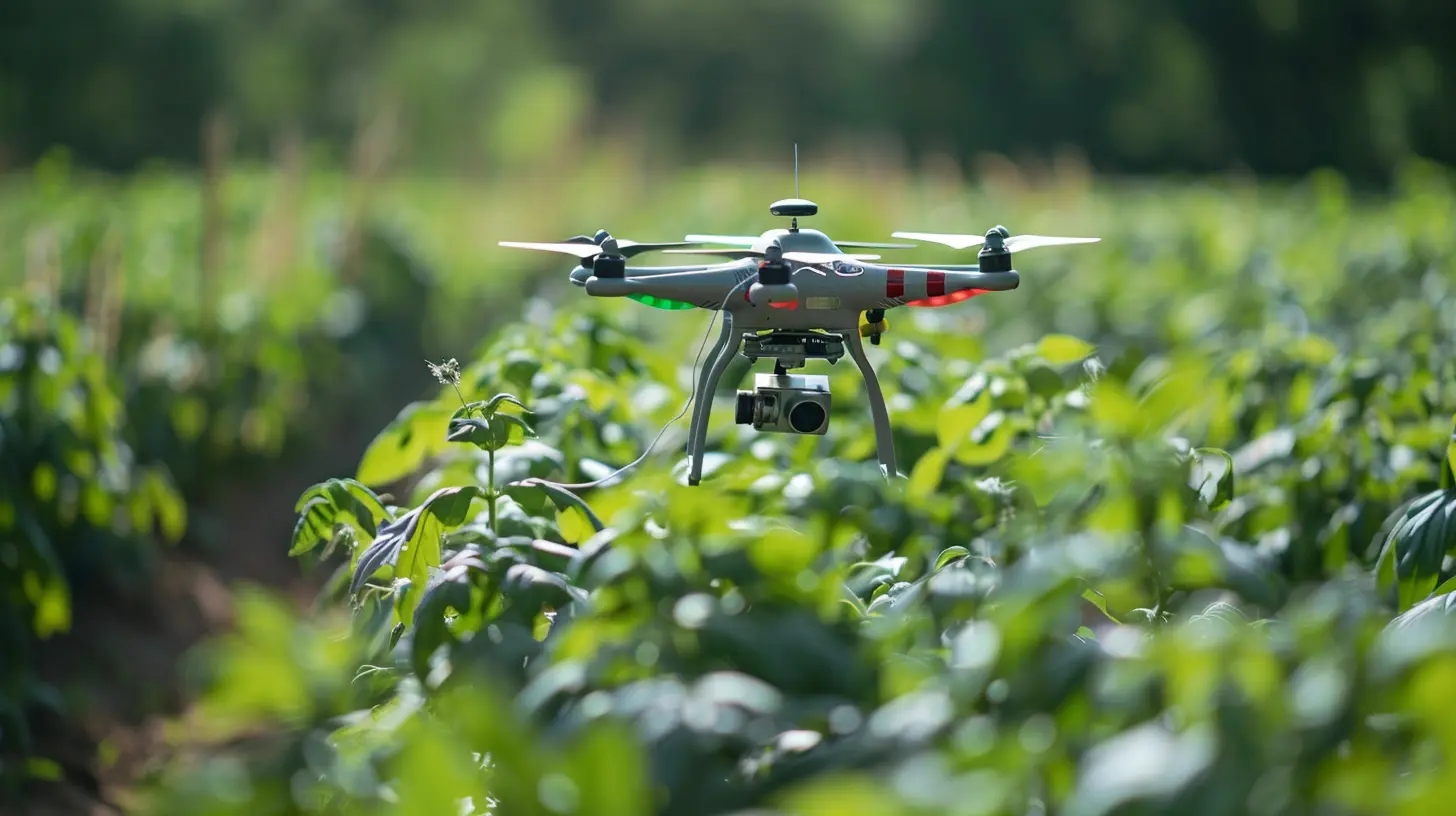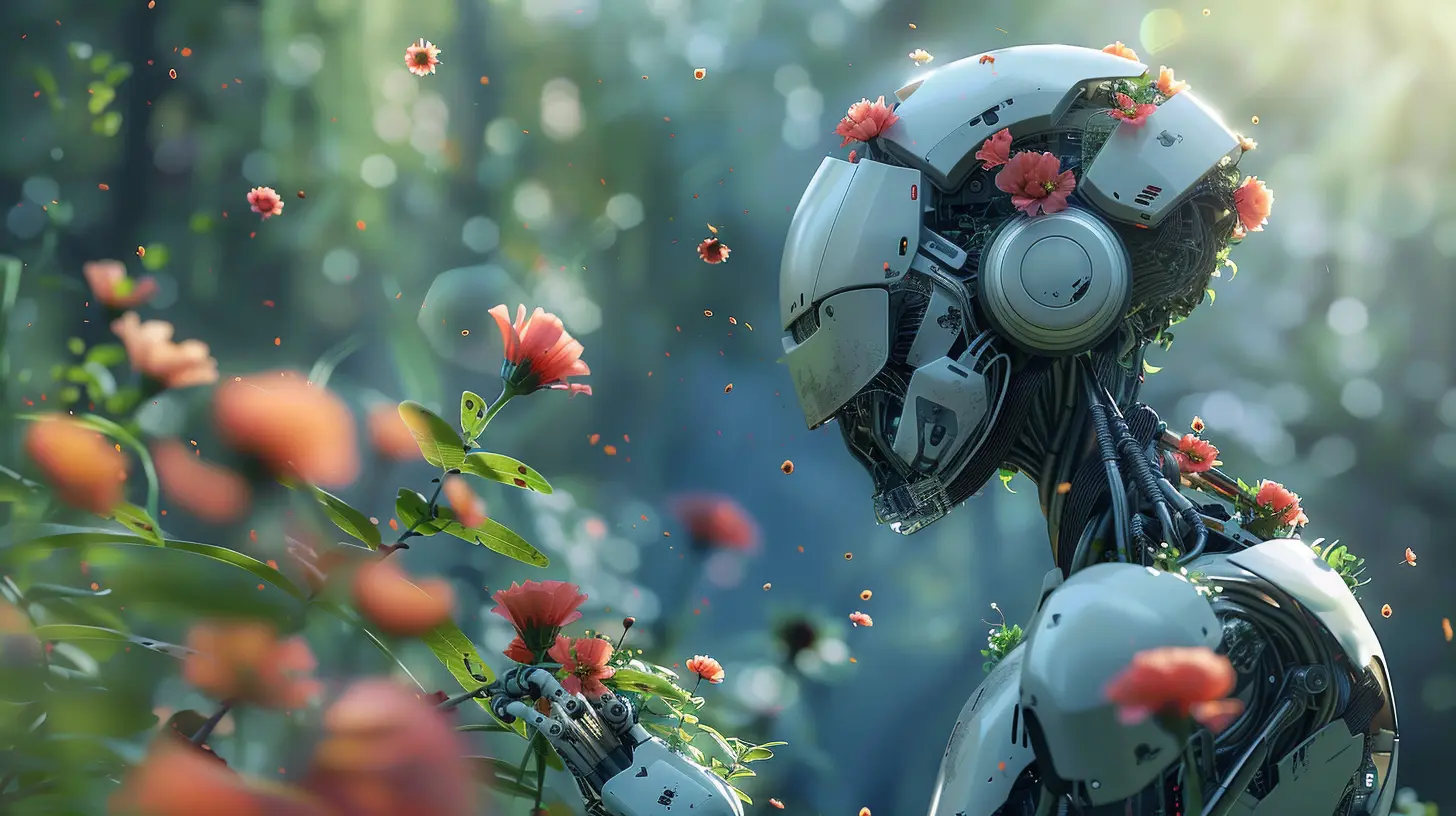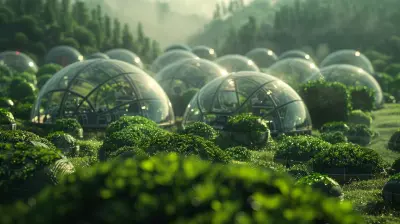AI in Agriculture: Innovations in Precision Farming
24 June 2025
It’s not exactly what comes to mind when you hear "artificial intelligence," right? Most people think robots, self-driving cars, or maybe even smart assistants like Siri and Alexa. But here’s the twist—AI is digging its digital roots into something far older than Silicon Valley: farming. Yes, the ancient art of agriculture is getting a high-tech makeover, and it’s pretty amazing.
Let’s talk about how AI is revolutionizing the way we grow our food. Whether you're a tech nerd, a green thumb, or just someone curious about where your salad comes from, this deep dive into AI in agriculture and precision farming will give you plenty to think about.
What is Precision Farming Anyway?
Before we get into AI specifically, let’s first unpack what “precision farming” means.Precision farming (or precision agriculture) is all about doing the right thing, at the right time, and in the right place. Think of it as farming that’s smarter, leaner, and more efficient. Instead of treating an entire field the same way, farmers can now tailor actions like seeding, watering, and fertilizing based on real-time data about each square meter of soil. In short, it’s like farming with a microscope and a GPS.
Now, that's where AI steps in.
How AI Supercharges Precision Farming
You might be wondering, “So, what exactly is AI doing in the fields?” Good question.AI doesn’t grab a shovel and start digging. Instead, it does what it does best—process mountains of data and learn from patterns to make informed decisions. Let’s break down some of the key innovations where AI is making big waves in precision farming.
1. AI-Driven Drones and Satellite Imaging
Ever seen a drone flying over a massive cornfield? No, it’s not just for fun or YouTube videos. These drones are actually packed with AI-powered cameras and sensors.They scan the crops from above, collecting data on plant health, soil moisture, temperature, and even pest infestation. Some satellites offer similar imaging on an even larger scale—tracking changes over weeks or months.
The AI analyzes these images to provide actionable insights. If one section of the field looks dry, the system flags it immediately. If another area is showing signs of disease, the farmer gets notified. No need to walk miles through rows and rows of plants—AI handles the scouting for you.
Key Benefits:
- Early detection of crop issues
- Better irrigation decisions
- Reduced use of pesticides and fertilizers
2. Smart Sensors in the Soil
Imagine the soil talking to the farmer. Sounds odd, right? But that’s basically what’s happening.Smart sensors, buried right in the ground, monitor things like pH levels, moisture, and nutrient content. These aren’t your average sensors; they’re connected to AI algorithms that analyze the data in real-time.
By understanding what the soil needs at any given moment, farmers can adjust their strategy on the fly. Need more nitrogen? Not a problem. Overwatering? Turn off the sprinklers. This means less waste, healthier plants, and happier farmers.
Key Benefits:
- Real-time soil health tracking
- Optimized fertilizer use
- Water conservation
3. AI-Powered Crop Monitoring
Here’s another cool one. AI systems can now monitor crop growth over time and suggest the best harvesting window. Think of it like having a virtual plant whisperer.Computer vision and machine learning models track how crops mature, identify growth anomalies, and even predict potential yield. Pictures taken by cameras—whether from drones, satellites, or smartphones—are converted into detailed health maps of the crops.
Machine learning helps identify diseases or pests from pictures, sometimes even better than a trained human eye. It’s like giving your plants a digital doctor’s appointment every day.
Key Benefits:
- Disease detection in early stages
- Accurate yield estimates
- Improved harvest timing
4. Autonomous Farming Equipment
Tractors that drive themselves? Yes, they exist. AI has entered the driver’s seat—literally.Autonomous tractors, sprayers, and harvesters use AI to navigate fields, plant seeds, spray crops, and collect harvests—all without anyone behind the wheel.
Using GPS, AI algorithms, and machine vision, these machines know exactly where to go, what to avoid, and how to do the job with precision. It’s like giving your farm its own team of robot employees.
Key Benefits:
- Lower labor costs
- Increased productivity
- Reduced operational errors
5. Predictive Analytics for Better Planning
Guesswork and gut feeling used to rule the day. Not anymore.AI can now crunch weather data, historical crop performance, market trends, and real-time field data to help farmers make smarter decisions. Want to know the best day to plant? How about the right crop to grow next season based on soil history? AI can forecast it all.
This means fewer surprises and smoother planning. Farmers can avoid risky decisions by leaning on data-driven recommendations.
Key Benefits:
- Risk mitigation
- Better crop selection
- Improved financial planning
6. AI for Supply Chain and Market Forecasting
It doesn’t stop at the farm. AI is helping beyond the field, too.Once the produce is harvested, AI tools are used for logistics—sorting vegetables, estimating shelf-life, and optimizing delivery routes. Some platforms even predict market demand and recommend ideal pricing strategies.
So, instead of dealing with spoilage or low prices, farmers stand a better chance of reaching customers faster and more profitably.
Key Benefits:
- Reduced food waste
- Optimized pricing
- Shorter time from farm to fork
AI in Agriculture: Real-World Success Stories
Let’s look at a few examples to show how all this tech isn’t just science fiction—it’s happening today.John Deere’s AI-Powered Tractors
John Deere, a name practically synonymous with tractors, has developed autonomous tractors equipped with computer vision and deep learning. These tractors recognize obstacles, plan paths, and do everything from tilling to planting.IBM’s Watson and The Weather Company
Using AI and data from The Weather Company, IBM's Watson helps farmers in multiple countries decide when to plant, what to plant, and how to manage disease outbreaks.Blue River Technology
Owned by John Deere, they developed a “See & Spray” machine that uses computer vision to identify individual plants. This allows for targeted herbicide applications—spraying only weeds and not the entire field.Challenges and Concerns
Now, let’s not pretend everything is sunshine and rainbows. AI in agriculture still has a few bumps in the road.High Entry Costs
Many of these technologies come with a hefty price tag. Small-scale farmers, especially in developing countries, may not afford the latest drones or smart tractors right away.Data and Privacy Issues
Collecting, storing, and analyzing so much data raises questions about who owns that data—and who has access to it.Resistance to Change
Some farmers are skeptical or simply unsure how AI will fit into their traditional practices. After all, if you've been farming a certain way for decades, switching to algorithms can be a big leap.The Future: Where is AI in Farming Headed?
The potential for AI in agriculture seems almost limitless. As the technology becomes more accessible and affordable, we’ll likely see:- More integration with IoT devices across the farm
- Personalized AI assistants for farmers
- Open-source AI tools designed specifically for small farms
- Improved crop genetics through AI and bioinformatics
We're stepping into an era where farming is no longer just about soil and sweat—it's about silicon and software, too. AI isn’t here to replace farmers—it’s here to make their lives easier, more productive, and ultimately more rewarding.
Final Thoughts
AI in agriculture isn't just a trend—it’s a transformation. From drones to data crunching, from smart soil sensors to autonomous tractors, the possibilities are vast and exciting. Sure, there are challenges, but the direction we’re heading in is clear: smarter farming for a hungrier world.So next time you bite into a crisp apple or dig into a bowl of rice, there’s a good chance that an algorithm had a role in bringing that food to your plate. And honestly? That’s pretty cool.
all images in this post were generated using AI tools
Category:
Artificial IntelligenceAuthor:

Jerry Graham
Discussion
rate this article
1 comments
Cody Black
AI in agriculture isn’t just planting seeds; it’s cultivating a harvest of possibilities. From data-driven soil analysis to smart irrigation systems, precision farming is revolutionizing the field. The future of food production is not just growing crops—it's growing efficiency and sustainability in every byte.
July 6, 2025 at 10:51 AM

Jerry Graham
Thank you for your insightful comment! Indeed, AI in agriculture is transforming how we approach farming, enhancing both efficiency and sustainability for a better future in food production.


